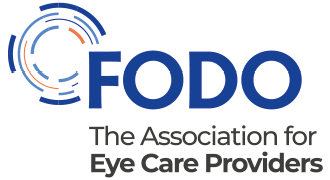Updates
Summary
This guidance summarises the key points of the extended cooling-off period legislation which apply to distance (internet and telephone sales) and off-premises (e.g. domiciliary) contracts. It also outlines the processes and information requirements for both eye care providers and customers from the time of the sale to the customer exercising their right to cancel and what the provider must then do to comply with the law.
The key points are:
- the cooling-off period has been extended to 14 calendar days
- spectacles and other prescription items are exempt from the cooling-off period, however other products (including non-prescription contact lenses) are not
- the cooling-off period does not apply to products valued at less than £42
- there are also new information requirements for eye care providers on informing customers of their consumer rights, including the right to cancel and of the product's full price including delivery and VAT.
Introduction
The cooling-off period, also known as the right of withdrawal, is two weeks for distance and off-premises contracts [1].
- An off-premises contract is defined as a contractual agreement between a provider and a customer which takes place in person and off the regular business premises. This could be for example a customer's home during a domiciliary appointment or an event taking place at a separate venue
- Distance contracts are defined as contracts concluded over other mediums such as the internet or the telephone.
This came into force 1 October 2015 and was designed to modernise consumer rights to take into account the increasing use of off-premises and distance sales contracts [1]. The aim is that a customer should enjoy equivalent consumer rights when, for example, ordering contact lenses in their own home as ordering them in an optical practice.
For eye care providers the most important aspect of the new rules is that spectacles and other prescription medical devices are exempt from the cooling-off period. This is because prescription spectacles are considered a personalised product and are therefore exempt.
Additionally, any other medical products and devices which are available on prescription are also exempt; however, other optical products or accessories, including non-prescription contact lenses, are not.
Details of cooling-off period
The additional information requirements that you need to provide customers with are:
- general information - i.e. your trading name, address and if you are trading on someone else's behalf
- a description of the goods
- a clear statement that spectacles and other prescribed items are not covered by the cooling off period as they are a customised product and/or medical device
- their consumer rights including the right to cancel, the time limit and the procedures of cancelling a contract for products other than spectacles and medical devices (Please see additional notes below for model instructions for cancellation to provide to customers).
It is also your responsibility to inform the customer of the total cost of the product including:
- a final price including VAT
- any additional delivery costs
- explain arrangements for payment.
You must provide this information to customers clearly, including what the customers' rights are under the cooling-off period. If this is not done, the cooling-off period will be extended from the original 14 days to 12 months.
Finally, off-premises and distance contract providers must not add additional charges for payment beyond the agreed delivery charge, such as options which require a customer to opt out of a premium charge. You must make sure that any telephone line used for customers to contact you is charged at the standard rate.
Cancellation process
Customers can cancel a distance or off-premises contract within the 14-day cooling-off period without having to provide any specific reason why. The cooling-off period starts when the customer receives the product.
If the customer wants to cancel the contract, it is their responsibility to inform you. For example, if the customer sends a letter containing a cancellation form and it is lost in the mail the customer is considered to have failed to inform the provider. However, if the customer emails the provider it is the provider's responsibility to acknowledge the cancellation notification.
It is also the customer's responsibility to make sure that the cancellation notification contains all necessary information. The notification has to follow a specific format and include:
- the traders name and contact details
- specifically, state that the customer wants to cancel the contract
- include the date the goods were received
- the customer's name and contact details
- signature and date.
After receiving a cancellation notification, it is your responsibility to:
- reimburse all payments including delivery and the return of the goods. However, you are only liable to reimburse the value of a standard delivery. For example, if a customer has opted for a 'next-day delivery' which is more expensive, the customer is liable for the difference in cost
- reimburse the customer within 14 days of receiving the cancellation confirmation. However, you are entitled to hold off reimbursement until the goods have been returned or you have received confirmation that the goods have been dispatched. This does not apply if you have offered to collect the items. You may make a deduction from the reimbursement for loss in value of any goods supplied, if the loss is the result of any unnecessary handling by the customer
- reimburse the customer using the same means of payment that the customer used for the initial transaction unless otherwise agreed. This includes making sure the customer does not suffer any additional charges as a part of the reimbursement process.
Model instructions
Access an example of model instructions for cancellation to provide to customers and complete all items in brackets.
Updates
Originally published: September 2015
Reviewed: January 2020
Next review date: March 2022
Info: This Optical Confederation guidance was published in September 2015 with links updated in February 2016. In January 2020 the guidance was converted into an online-only document as part of FODO's website upgrade, and minor changes were made to further simplify the guidance.
Reference and notes
The next review was originally planned for January 2022. This was changed due to prioritising work during the pandemic.
[1] The new legislation and the pre-existing legislation it references regarding exemptions can be accessed via www.legislation.gov.uk. Access the Consumer Rights Act 2015, the Alternative Disputes (Competent Authorities and Information) Regulations 2015 and The Consumer Contracts (Information, Cancellation and Additional Charges) Regulations 2013.

 Patients and public
Patients and public
 Policymakers
Policymakers
 Members
Members News and views
News and views
